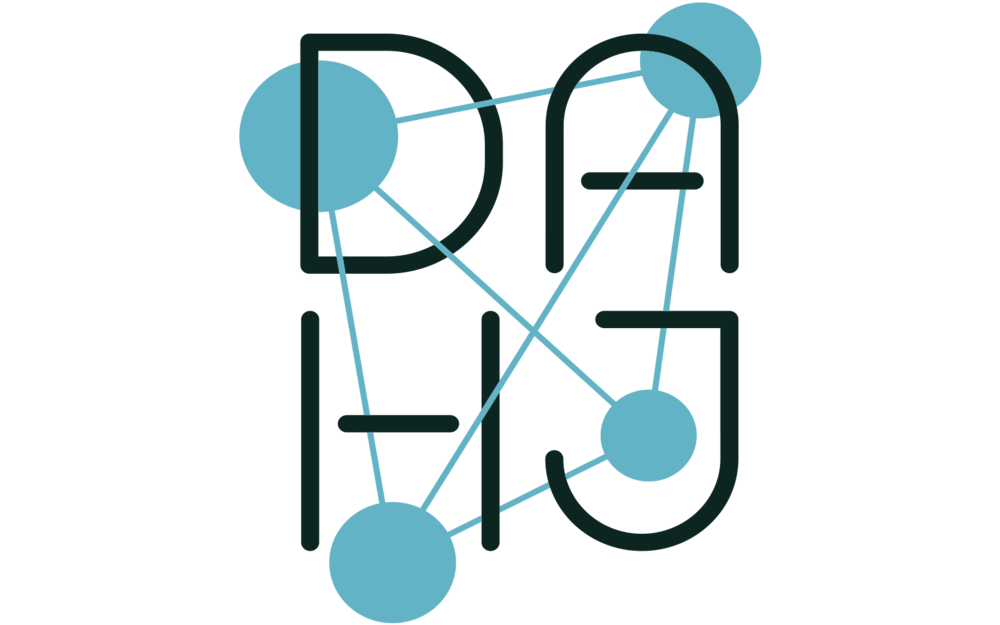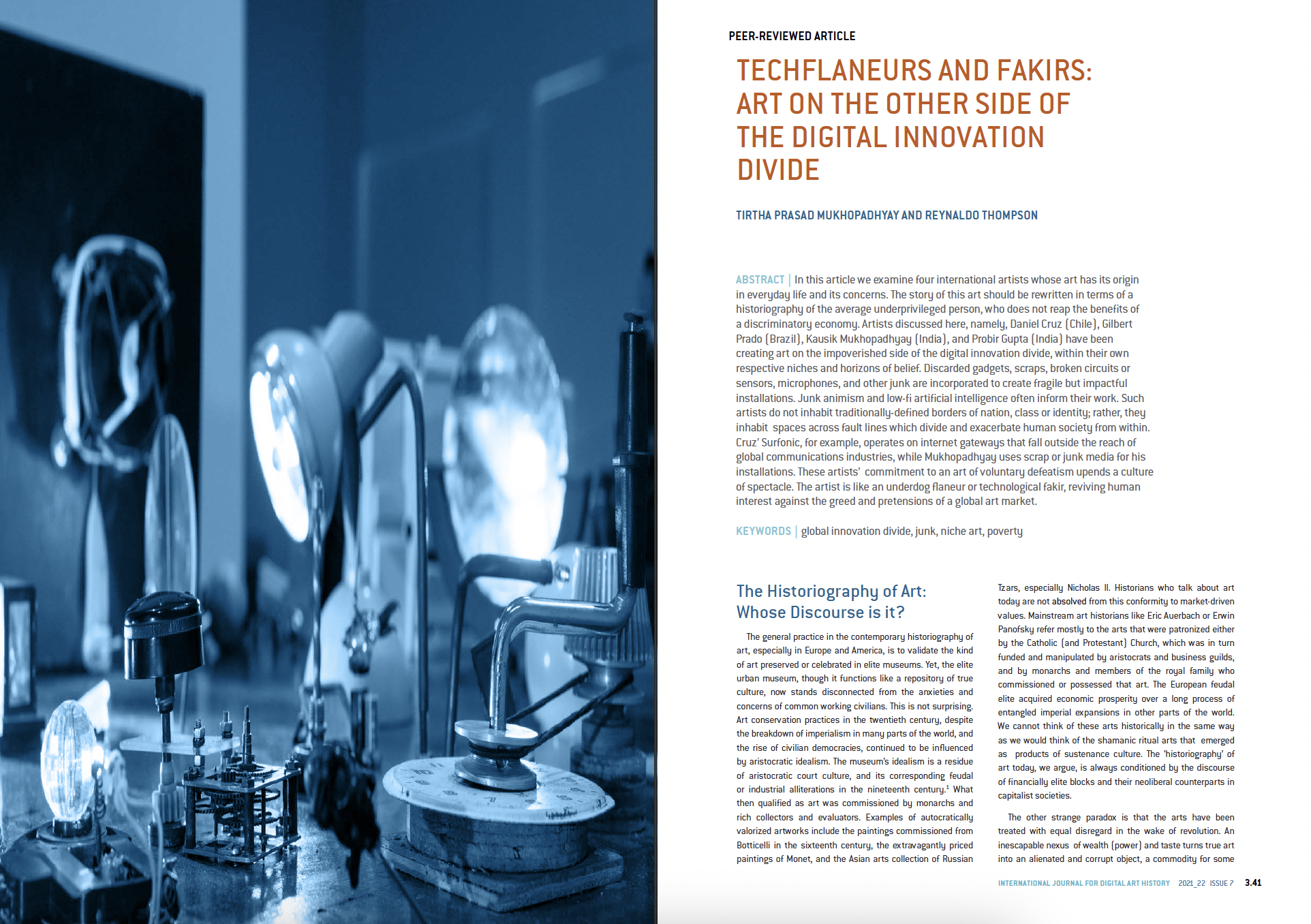Abstract
In this article we examine four international artists whose art has its origin in everyday life and its concerns. The story of this art should be rewritten in terms of a historiography of the average underprivileged person, who does not reap the benefits of a discriminatory economy. Artists discussed here, namely, Daniel Cruz (Chile), Gilbert Prado (Brazil), Kausik Mukhopadhyay (India), and Probir Gupta (India) have been creating art on the impoverished side of the digital innovation divide, within their own respective niches and horizons of belief. Discarded gadgets, scraps, broken circuits or sensors, microphones, and other junk are incorporated to create fragile but impactful installations. Junk animism and low-fi artificial intelligence often inform their work. Such artists do not inhabit traditionally-defined borders of nation, class or identity; rather, they inhabit spaces across fault lines which divide and exacerbate human society from within. Cruz’ Surfonic, for example, operates on internet gateways that fall outside the reach of global communications industries, while Mukhopadhyay uses scrap or junk media for his installations. These artists’ commitment to an art of voluntary defeatism upends a culture of spectacle. The artist is like an underdog flaneur or technological fakir, reviving human interest against the greed and pretensions of a global art market.
DOI: https://doi.org/10.11588/dah.2021.7.95280
Para la versión en español: https://doi.org/10.25025/hart09.2021.07
Author
Tirtha Prasad Mukhopadhyay
is an Art and Business Professor at the University of Guanajuato, Mexico. He is a multidisciplinary academic who taught at the Presidency University of India (1996-2000), the University of Calcutta (2000-2016), and the University of Texas at Dallas from 2002 to 2005, before migrating to Mexico. He was a Fulbright-Nehru Senior Researcher at the University of California, Santa Cruz, USA from 2013 to 2014. His published books include Affective States in Art (Proquest-umi), Cezanne to Picasso (Calcutta University Press, India), and more than 50 articles on creativity, cognition, and aesthetics (ios Press), digital art (mit Press), visual anthropology (Atelier-Etno cisenp), and literature (oup). Mukhopadhyay is also a poet in Bengali. He is the editor-in-chief of the interdisciplinary journal Rupkatha, indexed by Scopus since 2009.
Author
Reynaldo Thompson
is a multidisciplinary artist. His work encompasses painting, photography, digital creation, performance, and video art. Thompson studied Architecture at the University of Guanajuato (Mexico) and at Université Laval in Quebec (Canada). After completing postgraduate studies at the School of Architecture of the Polytechnic University of Catalonia, he earned a PhD in Arts and Humanities, specializing in Aesthetic Studies at the University of Texas at Dallas (United States). He has coordinated the Digital Arts School at the University of Guanajuato, where he currently teach and also work as a curator for exhibitions, speaker, and writer.

